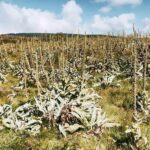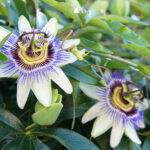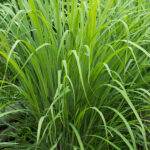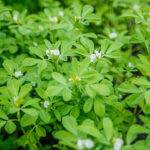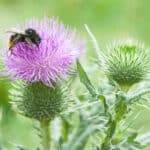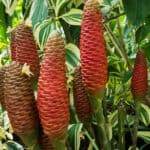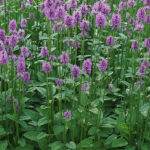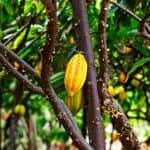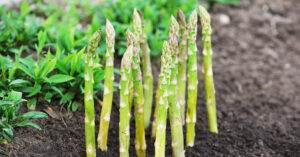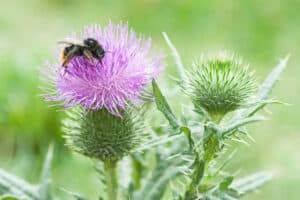San Pedro Cactus Overview
The San Pedro cactus (Echinopsis pachanoi syn. Trichocereus pachanoi)—also called Huachuma in the language of the native Quechua people of the Andes Mountains—is a fast-growing cactus native to the entire Andes Mountain Range in western South America. It is an evergreen member of the Cactaceae family and grows 10 to 20 feet tall and 5 to 6 feet wide.
San Pedro is a blue-green, multi-stemmed, columnar cactus, with each individual column reaching up to six inches in diameter and flaunting 4 to 8 vertical ribs with short spines. Perhaps the showiest parts of the San Pedro Cactus are its large, trumpet-shaped, fragrant, white flowers, humbly boasting a diameter of 8 to 10 inches, blooming at night and only remaining open for the following day.
San Pedro Cactus History and Uses

The San Pedro cactus has a rich history, with archaeological evidence indicating its use in shamanic practices as early as 1500 BCE in modern-day Peru. The cactus contains a compound called mescaline, a naturally-occurring psychoactive alkaloid that binds to serotonin and dopamine receptors in the brain, affecting one’s sense of time and self. Additional reported effects include increased empathy, introspection, focus, and energy.
Early uses of the cactus include treating cutaneous infections, general illnesses, and spiritual ailments. Traditionally, the use of mescaline from the San Pedro is a ceremonial activity, performed by a shaman at an altar, or mesa, with the intent to heal or treat illness via ritual. The shaman is typically a certified healer, or curandero, and is the facilitator of diagnosis, treatment, and the invocation of spirits; however, cures or improvements are typically credited to the plant itself, as opposed to the curandero.
Legality
While the use of the San Pedro cactus for obtaining mescaline is illegal in the United States, purchasing and planting the cactus is legal for ornamental and landscaping purposes. It has been reported that the cactus remains legal in the U.S. partly due to the predominant variant containing weaker concentrations of mescaline. If you are located outside the U.S., be sure to check local regulations before purchasing and planting a San Pedro cactus.
Planting and Propagation
From Seed
Planting a San Pedro from seed tends to be more difficult and less common, as the seeds require rather specific conditions in order to germinate. To prepare for seed sowing, choose a fast-draining, sterilized substrate, such as sand or perlite, an amorphous, volcanic glass, and wash shallow, 3-inch pots with drainage holes. Moisten the substrate until you can no longer squeeze water from it, and then fill your pots half an inch from the top.
Seeds are most likely to germinate while still fresh, so plant immediately after harvesting, if possible. Plant several seeds in each pot, half an inch apart, to increase chances of germination, and anchor them firmly to the surface. Cover with a thin layer of sand or perlite (ensure light can still penetrate), mist with cool water, and tamp down lightly.
Cover pots with plastic wrap or a propagation dome to retain heat and humidity, and place them in a spot where they will receive 6-8 hours of indirect sunlight each day. After receiving adequate sunlight, place the pots on a bottom-heating mat, and heat to 80°F, and then allow them to cool to 70°F at night.
Once the soil becomes dry, water by placing the cacti in a bin and filling with water until the bottom half of the pots are submerged, and allow to soak for 20 minutes.
Germination should occur within a month; if more than one seed per pot germinates, thin to one plant each. Move the pots outdoors to a sheltered location, and gradually remove the covering to allow the plants to acclimate to an outdoor environment. Concurrently, introduce the plant to direct sunlight, beginning with 1–2 hours per day, and increasing to full exposure (6–8 hours per day) over one or two weeks. Once acclimated, the seedlings can be transplanted to larger containers and set under light shade for the summer. After a year from sowing, and once the cooler fall weather rolls in, they can be replanted in the ground in full sun.
From Cutting
Growing a San Pedro from a cutting is significantly simpler and more common. The target cactus should be at least 12 inches tall before cutting; this allows you to take a six inch cutting and leave at least six inches on the original cactus. Be sure to use a sterilized knife to decrease the chance of a bacterial or fungal infection. After obtaining a cutting, lay it horizontally in a dry, shaded area until the open end dries, forming a callous; this may take one to three weeks.
Once the open end is completely dry (this prevents fungus from growing), you can plant your cactus in a container. Choose a pot that allows space for continued growth; terra cotta is best, but any large enough container with drainage holes will suffice. Fill your container with a well-draining cactus soil, which can be purchased or made by combining two parts pumice or perlite with three parts sand or gravel.
Place your cutting vertically on the soil, and add 2 to 3 more inches of soil around the base. Place your cactus in a shaded area, as it does not yet have roots to aid in replacing lost moisture. Roots will begin to develop in two weeks to a month. Do not water or place in direct sunlight until the roots have started to form. You can check for the formation of roots by gently lifting the cactus from the soil.
Once roots have sprouted, you can begin watering your cactus in small amounts, waiting for the soil to dry completely before watering again. You can also begin to introduce your cactus to direct sunlight for 1 to 2 hours a day, increasing daily exposure over a week or two.
San Pedro Cactus Growth & Care
Once established, the San Pedro is comfortable in direct sunlight. Although its needs are best met naturally in Hardiness Zone 9, it is both drought and frost tolerant. The cactus benefits from light waterings, particularly in the dry months, but overwatering may result in root rot or other fungal infections. It does not require water during the winter, as its rooting hormones freeze and become dormant, diminishing its abilities to uptake water.
If your San Pedro cactus is an indoor plant, it will do best living near a south-facing window year-round, although increased exposure to sunlight during the winter months is beneficial. An indoor cactus requires occasional watering, with time for the soil to completely dry out before watering again. It is better to err on the side of underwatering than overwatering.
Pests and Diseases
The San Pedro cactus is relatively pest-less, although scales and spider mites may take up residence. The scales can be removed by picking them off. Horticultural oil is effective in removing both the scales and spider mites.
The most common diseases affecting the San Pedro tend to be fungal or bacterial, caused by overwatering or unsanitized cuttings. Maintain sterile procedures when cutting the cactus, and avoid overwatering to reduce the chances of a diseased cactus.
The cactus may also be disturbed by prolonged harsh weather conditions and will indicate its unhappiness externally. Drooping, squishy texture, particularly at the base of the cactus, indicates overwatering. Dry, shriveling skin indicates underwatering. External burning, scarring, or yellowing means your cactus is receiving too much direct sunlight, while discoloring and demonstrating signs of etiolation—usually characterized by elongated, weaker stems—indicate a lack of sunlight.
The Sacred San Pedro Cactus
The San Pedro cactus is a striking, recognizable plant with deep cultural roots. Appreciation for its unique beauty and medicinal uses has expanded beyond its native region in the Andes Mountains and made itself known in many backyards and landscapes. As with any plant, it is important that we regard it with respect and admiration before attempting to manipulate it to meet our expectations.








